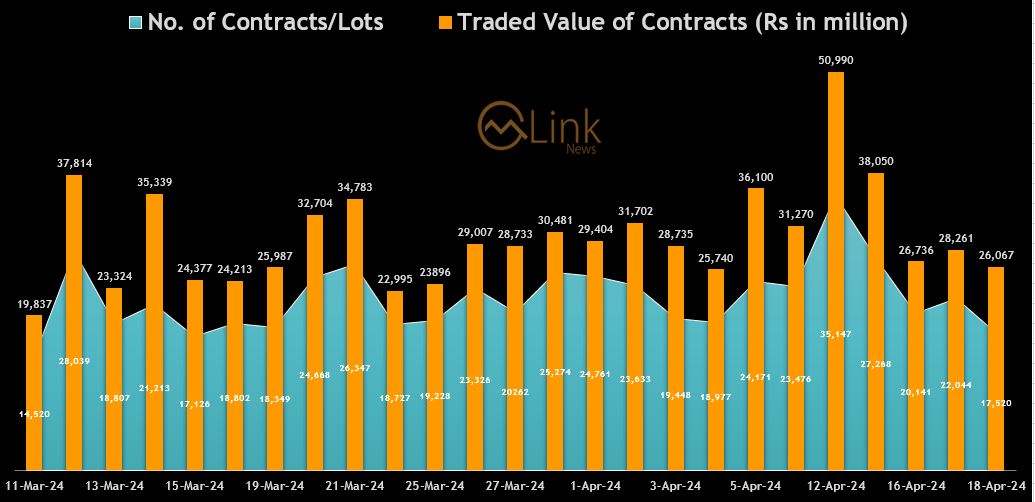Do you need a little nest egg? Check out our ultimate step-by-step guide on how to save money. It covers everything you need to do to start saving. This was originally published on The Penny Hoarder, which helps millions...
Take a moment. Think about being your best self — living your best life.
What do you really want to do with your life? Raise a happy family? Travel the world? Buy a nice house? Start your own business?
Reality check: To accomplish any of those things, you’re going to need to know how to save money.
Unfortunately, Americans are bad at saving money, and we’re getting worse. Thanks to rising costs, stagnant salaries and student loan debt, we’re saving less than ever.
Table of Contents
Step 1: Develop Savings Goals and Strategies
Step 2: Pick Budgeting and Debt Repayment Methods
Step 3: Choose a Financial Institution and Accounts
Step 4: Automate Your Finances
Step 5: Establish a Budget-Conscious Lifestyle
Step 6: Make More Money
Here Are Our Best Tips to Save Money
Are you ready to actually start saving money? What you’re reading is a step-by-step guide on how to do it — how to come up with savings strategies, choose a budgeting method, pick the right financial institution, automate your finances and live a budget-conscious lifestyle.
Pour yourself a cup of coffee and buckle up. It’s time to get serious about this.
Step 1: Develop Savings Goals and Strategies

You’re probably asking yourself, “How much should I save?”
Your first move is to set specific savings goals for yourself — emphasis on specific. Naming your goals will make them more real to you. It’ll help you resist the temptation to spend your money on other stuff.
Think Long Term and Short Term
What exactly do you want to save money for? How much will you need to save? And what do you need to save for first? Think short- and long-term:
Short-term: Save for a real vacation or nice holiday gifts. But first, save enough to have a decent emergency fund — three to six months’ worth of living expenses, in case you run into an unexpected car-repair bill or lose your job, for example. Long-term: This involves big-picture thinking. Here, you’re saving money for things like your children’s college fund or for your retirement plan.Analyze Your Income
How much can you realistically save for these goals, now that you’re making them a priority?
Write down your income and expenses — all of your expenses, from utility bills to your Netflix subscription. There are probably more ways to save money than you realize. Don’t forget your student loans or credit card debt. Make sure you know what you’re spending in every budget category. Pay special attention to what you’re spending on non-essentials, such as eating out.
An easy way to automate this process is to use Trim, a little bot that’ll keep track of all your transactions.
Connect your checking account, credit card and savings account for a big-picture look at your spending habits. Then, take a closer look by checking out each of your transactions. Set alerts that’ll let you know when bills are due, when you’ve hit a spending cap or when you’ve (hopefully not) overdrafted. This will help you stick with your savings plan.
Check in on Your Credit
Do your own credit check. Keeping tabs on your credit score and your credit reports can help guide you to a financially healthier life — especially if you use a free credit-monitoring service like Credit Sesame. It gives you personalized suggestions for improving your credit.
The better your credit, the better off you’ll be when you’re getting a home or car loan. Credit Sesame can estimate how big a mortgage you might qualify for, for example.
Here’s our ultimate guide to using Credit Sesame.
Step 2: Pick Budgeting and Debt Repayment Methods

It’s time to start making a monthly budget and sticking to it — especially if you have debt.
This way, you can put savings right into your budget. It’s never an afterthought.
Here are five different budgeting methods. We can’t tell you which one to choose. Be honest with yourself, and choose the one you think is most likely to work for you. This is how to save money on a tight budget.
The 50/30/20 Rule
This one was popularized by U.S. Sen. Elizabeth Warren, a bankruptcy expert, and her business-executive daughter Amelia Warren Tyagi.
Split your income into three spending categories: 50% goes to essential bills and monthly expenses, 20% toward financial goals and 30% to personal spending (all the stuff you like to spend money on but don’t really need). Put the money earmarked for your financial goals into a separate savings account.
Good for: People who worry they won’t have a life if they’re on a budget. Here’s our complete guide to 50/30/20 budgeting.
Envelope Budgeting
So-called envelope budgeting is traditionally a cash-only budget. Every month, you use cash for different categories of spending, and you keep that cash for each category in separate envelopes — labeled for groceries, housing, phone, etc.
Prefer plastic? Here’s our review of Mvelopes, an app that lets you digitize this method.
Good for: People who know they need help with self-control. If there’s nothing left in one envelope toward the end of the month, there’s no more money to spend on that category, period.
Zero-Based Budget
Here’s how you draw up this budget: Your income minus your expenses (including savings) equals zero. This way, you have to justify every expense.
Good for: People who need a simple, straightforward method that accounts for every dollar. Here’s our guide to the zero-based budget.
Debt Avalanche
This debt-repayment method helps you budget when you have debt. Pay off your debts with the highest interest rates first — most likely your credit cards. Doing that can save you a lot of money over time.
Good for: People with a lot of credit card debt. Credit cards generally charge you higher interest than other lenders do. Learn more about the debt avalanche method here.
Debt Snowball
Money management guru Dave Ramsey champions the debt snowball method of debt repayment. Pay off your debts with the smallest balances first. This allows you to eliminate debts from your list faster, which can motivate you to keep going.
Good for: People who owe a lot of different kinds of debts — credit cards, student loans, etc. — and who need motivation. Here’s how to use the debt snowball method to eliminate debt.
Step 3: Choose a Financial Institution and Accounts

You might be thinking, I already have a bank. And of course you do. If you’re like most of us, you’ve had the same bank for years.
Most people don’t give this a second thought. They figure it’s too inconvenient to switch. But it’s worth shopping around for a better option, because where you bank can make a real difference in how much you save.
What to Look for in a Bank Account
Did you know the biggest U.S. banks are collecting more than $6 billion a year in overdraft and ATM fees?
Maybe it’s time to try another financial institution. We’ve found some great online bank accounts to help you avoid fees and get features you won’t find with the brick-and-mortar banks.
Here’s one example: There’s a mobile baking app called Varo Money.
The FDIC reports that the average savings account pays a paltry .08% APY*, but when you open an online checking and savings account with Varo, it will pay you more than 20 times that amount on your savings account.
We know opening a new bank account isn’t exactly everyone’s idea of fun, but Varo makes it easy. You can open an account with just a penny, and more than 750,000 people have already signed up.
Oh, and there are no monthly fees.
Want more options? Here’s our ultimate guide to help you choose the right account.
*https://www.fdic.gov/regulations/resources/rates/
Pay Less in Credit Card Interest
These days, credit card interest rates often climb north of 20%. How can you avoid paying all that interest? Your best bet is to cut back on your expenses and pay off your balance as soon as you realistically can.
Start by using the right credit card for you, based on your situation and needs. Would you prefer a card that gives you cash back or travel incentives, a balance-transfer card, or a card that’ll help you build credit?
Also consider paying off your high-interest debt with a low-interest personal loan. It’s easier than you might think. Go window-shopping at an online marketplace for personal loans. Here are some we’ve test-driven for you:
AmOne allows you to compare rates side-by-side from multiple lenders who are competing against each other for your business. It’s best for borrowers who have good credit scores and just want to consolidate their debt. Fiona is also a marketplace but allows you to borrow more money and borrow it for a longer period of time — if that’s what you want to do. Upstart tends to be helpful for recent grads, who have a young credit history and a mound of student debt. It can help you find a loan without relying on only your conventional credit score.Step 4: Automate Your Finances

That’s right. We’re deep into the 21st century, here, so make technology do the work for you.
The best ways to save include automation. You’ll save time, and time is money. Here are a few money-management steps you can take today to ensure you won’t have to think about money for more than a few minutes every month.
Automate Bill Pay
Most bills are paid online now, reports the Credit Union Times. But you can take it a step further. Set it up so you’ll receive and pay all of your bills online through your bank. That simplifies things so you’ll never miss a payment.
Here’s how: Go to your bank’s online bill-pay feature. Enter all the companies that bill you, and the account numbers for each. Arrange to receive e-bills from whichever billers will do that.
You can also have your bank send digital payments to individuals (like a landlord).
Automate Savings
Whatever you need done financially, there’s an app for that. We’ve put several to the test.
Digit is an automated savings platform that calculates how much money you can save. Here’s our review of Digit. Long Game Savings combines online games and saving money. Also, see whether your bank offers automatic savings transfers that will move money from your checking account to your savings account each month.Automate Investing
You don’t have to be Warren Buffett to be an investor. You don’t even have to follow the stock market, read The Wall Street Journal or watch CNBC.
You can take advantage of these apps offering easy, automatic ways to start investing — the “set it and forget it” method. They’re useful for tricking your brain into saving more. You’ll do it without even realizing you’re doing it.
Stash lets you start investing with as little as $5 and for just a $1 monthly fee for balances under $5,000. Bonus: Penny Hoarders get $5 just for signing up! Acorns connects to your checking account, credit and debit cards to save your digital change. It automatically rounds up purchases with your connected cards and invests the digital change into your chosen portfolio. Bonus: Penny Hoarders get $5 just for signing up! Read our full review of Acorns here. Blooom is a company that offers a free “health check-up” for your 401(k). Then, for only $10 a month (Penny Hoarders get the first month free!), it’ll optimize and manage your retirement savings for you. See how Blooom helped one Penny Hoarder make the most of her 401(k).Automate Budgeting
You can automate your budget, too. There’s an app for that. Actually, we’ve found several.
Charlie is a money-saving penguin who lives in your SMS text messages or Facebook Messenger (your choice, though Charlie is more fun and reliable on Messenger). He helps you save money through things like making sure you’re getting the best deals around (ahem, overpaying $24 a month on that cell phone bill?).
Mint lets you see all your accounts, cards, bills and investments in one place.
Medean for iOS ranks your finances based on how they stack up to those of people of similar age, income, location and gender. It calls itself a “health index for your finances,” and helps assess your situation and find ways to save money.
MoneyLion offers rewards to help you develop healthy financial habits and will literally pay you for logging onto the app. You can earn points in the rewards program by paying bills on time, connecting your bank account or downloading the mobile app.
Step 5: Establish a Budget-Conscious Lifestyle

Here’s the harsh reality: To save more money, you’ll need to spend less money. (Or make more money, but we’ll get to that next.)
That doesn’t mean you have to live like a monk. Nor do you have to survive on ramen noodles and the dollar menu, wear scuffed shoes and patchy clothes, or cut your own hair with hedge clippers.
You just have to be smart and strategic. Here are some of our best tips to help you spend less:
Save Money Around the House
Your home is your castle. But castles are so, like, expensive. Fortunately, there are lots of ways to save money around the house.
Your priciest purchases — like appliances and furniture — are a natural place to look for savings. Try repairing your appliances instead of replacing them. And here’s a good list of other tricks for saving on furniture and appliances.
The cost of cooling, heating and lighting your home is massive. Try installing thermal curtains and a programmable thermostat. Or check out these creative, energy-saving ways to slash your utility bills.
Find Free Entertainment
Entertainment can cost an arm and a leg. But hey, we have to live, right? So do it for free! Next time you’re planning a night out, take advantage of one of these free date nights or group outings.
If you’re going to stay in, cut the cord. More and more people are doing this, because their cable bill has gotten so expensive.
If you’re thinking of switching to an online streaming service and you’re wondering which would be best, we’ve got you covered with our comparison of Netflix, Prime Video and Hulu. We compared costs, type of content, number of available titles and more.
You also should reconsider that gym membership if you’re not really using it.
Cut Your Food Budget
Groceries are a huge part of everyone’s budget, so they’re a big target for savings. Next time you’re putting together your shopping list, make sure to check out our favorite tricks to save money at the grocery store:
Look for free printable coupons. Compare your local grocery prices using this worksheet. Ibotta pays you cash back on purchases if you take pictures of your grocery store receipts. Plus, you’ll get a $10 bonus for signing up! Scan grocery stores’ websites for deals and hit more than one store.Not loving the supermarket? Nearly 70% of us say we spend too much on take-out or going out to eat. Here’s how to save money at restaurants, too.
Find out If You’re Wasting Money on Insurance
Buying insurance can be confusing and overwhelming, because there are so many options.
Here’s how to find affordable insurance:
For Your Car: Auto Insurance
Here are the blunt facts about how to get lower car insurance premiums: Have fewer accidents, get fewer traffic tickets and boost your credit score.
Automotive experts also gave us the following tips:
Buy a used car. Participate in your insurer’s safe-driving program. Shop around for better rates. One easy way is The Zebra, a car insurance search engine that compares your options from more than 200 providers in less than 60 seconds. Here’s how one guy is saving $360 this year on car insurance because of The Zebra.For Yourself: Health Insurance
Let’s face it: Health insurance can be confusing and intimidating.
If you’re buying insurance for yourself, start with the federal health insurance marketplace at Healthcare.gov to see whether you qualify for any discounts or assistance.
Finding affordable health care coverage is a huge challenge for freelancers. Here’s how to get covered if you’re self-employed.
For Your Family: Life Insurance
Life insurance pays your dependents a set amount of money if you die. Whether to buy it is a judgment call.
Life insurance is considered more important if you’re married or have children. You might also want a basic policy that would pay off your funeral, mortgage or other debt.
You’ll probably be asked to choose between two options: term or universal life insurance. If you’re like most of us, you’ll choose term — the simplest, cheapest and most popular kind of life insurance policy.
To help you save money and navigate this complicated industry, modern companies are updating the old model:
Policygenius is an online-only platform that offers instant quotes from top carriers to help you make a quicker decision. Once you choose a life insurance company, you can apply right online, and a Policygenius rep will give you a quick call to ask a few follow-up questions. Haven Life can insure you quickly based just on the health information you provide online. Ethos can get you term life insurance in less than 10 minutes — with no medical exam — for coverage up to $1 million. Ethos offers a digital application, and customer service is available if you have questions.Step 6: Make More Money

How can you increase your income? It’s easier to save money if you’re bringing in more money to begin with.
Here are a couple of simple ways to make extra cash at home:
Share Your Opinion
You won’t get rich taking surveys, but if you’re just vegging out on the couch, why not click a couple buttons and earn a few bucks? We’ve tried a lot of paid survey sites, and two of the best we’ve found are My Points and InboxDollars.
Clear Your Closets
Sell your old stuff! Use the Decluttr app to get paid for your old DVDs, Blu-Rays, CDs, video games, gaming consoles and phones.
You can also sell nearly anything through the Letgo app. Just snap a photo of your item and set up a listing in about 30 seconds. If you have more free time, try selling items on Craigslist or eBay.
Find a Side Gig
For our best ideas to boost your bottom line, check out the following:
Unique ways to make money at home. How to make extra money online. How to earn passive income. The Penny Hoarder’s continually updated page on open work-from-home jobs.Mike Brassfield (mike@thepennyhoarder.com) is a senior writer at The Penny Hoarder. He’s slowly getting better about saving money.
This was originally published on The Penny Hoarder, which helps millions of readers worldwide earn and save money by sharing unique job opportunities, personal stories, freebies and more. The Inc. 5000 ranked The Penny Hoarder as the fastest-growing private media company in the U.S. in 2017.














